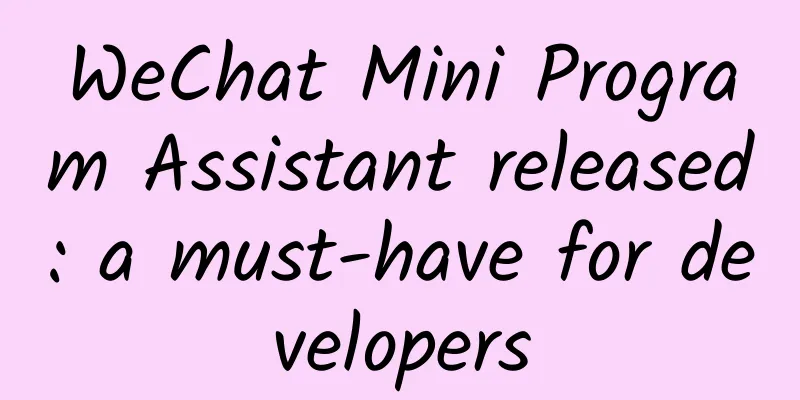Android SDK Development - Release and Use Pitfalls

|
Preface During the Android development process, some functions are common or required by multiple business parties. In order to unify functional logic and avoid duplicate development, it is necessary to develop this function into an SDK. background It just so happened that I encountered a similar need recently. After developing the SDK, I encountered some pitfalls when integrating it into the project or providing it to others. I would like to share them here to avoid other developers who need to develop SDKs from repeating the same pitfalls. The article is to explain the following:
Integration method comparison After the SDK is developed, it is necessary to provide an integration method so that others can use it. There are roughly three integration methods. 1. Provide Module This integration method makes the entire SDK source code available to others.
Moreover, if multiple modules are referenced in the project at the same time, many code files will be added to the project structure. It is also possible that the SDK has been changed accidentally. Because the source code can be modified directly without any protection. 2. Provide AAR file This integration method is to compile the SDK and provide the AAR file to others.
3. Push to the warehouse (here takes MAVEN warehouse as an example) (recommended) This integration method pushes the AAR file compiled by the SDK to the warehouse, which can be referenced later through implementation or api (compile for old versions of Gradle).
The table comparison is as follows: Integration method Advantages and Disadvantages Provide Module without pitfalls Maintenance is troublesome, no code protection Provide AAR file Only one file has pitfalls, update is troublesome Push to warehouse Convenient integration, version management Maven publish has pitfalls Some pitfalls of AAR integration Generally, SDK development encapsulates some functions for easy calling, so third-party libraries are rarely introduced into modules. In this case, there is no big problem with using AAR integration. However, when you introduce a third-party library, such as Retorfit, into your SDK (not directly into a jar package or aar package), you use AAR integration and a java.lang.NoClassDefFoundError error will be displayed when running the corresponding code.
The Module runs fine, but why does AAR report an error? If you try to import the third-party library used by the SDK into the project again, you will find that the program does not report an error. Therefore we can conclude that:
Don't panic, there are always more solutions than problems. We can solve this problem by pushing the SDK to the repository. There are many push repositories, such as the open source jcenter. Here we consider that some SDKs are for internal use within the company, so we use Maven as an example to explain. The difference between using Maven publish and Maven to push the SDK to the Maven repository Maven publish is actually an upgrade of Maven. Therefore, maven publish is generally preferred. The project here has already used Maven publish, so we will also use Maven publish at the beginning. As a result, the pit came. It was found that the same error as AAR occurred and the dependency could not be transferred. Here, I quickly took a look at the pom file (in the same directory as AAR) and found that there were really no dependencies. I checked the information online.
I have a question
Of course there should be a corresponding way to deal with it, but due to the tight time requirements of the project and not wanting to spend too much time, I have not found a solution yet. If anyone knows this, please leave a message. I will study it later and update the article if there is a solution. Therefore, the integration method of Maven publish is not discussed here. Finally, I consulted the information and used the Maven push method. So how to use it? 1. Use the local repository first, make sure everything is ok, then use the remote one Add the following code to the build.gradle file of the Module:
Execute the uploadArchives task to report. Then go to the directory specified by the above URL or open it through a browser to see the uploaded files. Looking at the pom file, you can see that the dependencies are all above. 2. Use a remote repository and make slight modifications to the above.
Remember to replace the URL, username, and password respectively. When others need to use it, they only need to add the following to the Module:
So the composition of the warehouse is pom.groupId+pom.artifactId+pom.version Tips: 1. SDK development may encounter the situation where the same version, such as 0.0.1, often needs to be modified before release. At this time, if you push the modified SDK to the remote, the local project may still use the old content. There are two ways to deal with this situation.
2. When using a remote repository , the username and password are generally not pushed directly to the code repository, but may be placed on the build machine. At this time, you need to use an external file similar to local.properties to store it. At this time, there is a pitfall that needs to be reminded. When defining in local.properties, such as maven_user_name=username, remember not to add double quotes, otherwise authentication will fail and the following prompt will appear:
3. How to specify debug or release when using Maven? By adding in the android block
Can be specified. You can see the aar package by viewing the Module's build/outputs/aar. You can see the local pom file by viewing the build/poms/pom-default.xml of the Module. 4. If some developers still get the java.lang.NoClassDefFoundError error after following the above steps , you can try the following: Revise
for
Summarize
|
<<: Google's official MVP sample code reading notes
>>: Looking forward to the 12 major trends in mobile application development in 2019
Recommend
Do you often misremember things? Your memory may be playing tricks on you
In the process of couples counseling, we often fi...
A fire broke out in a high-rise building in Tianjin. How should we escape when a fire breaks out in a high-rise building?
According to China National Radio, a fire broke o...
Introduction to the Tik Tok information flow brand advertising matrix!
Douyin’s brand advertising product matrix: Douyin...
This lousy "big-tailed wolf" of Buggy is actually a whale?
This year's species calendar includes many la...
Without these four skills, you are embarrassed to say that you are a product developer
The importance of design in the tech industry is ...
Research finds: Eating spicy food regularly can reduce the risk of cancer and death! But the premise is that you have to eat it right!
Some people love spicy food, while others don’t l...
Users are expensive, channels are expensive, promotion is expensive...How should we operate?
In the era of super users , if I had to sum it up...
"A year's rain falls in one day" may happen more frequently in the future
Recently, many parts of southern China have been ...
How to create hot marketing activities and specific implementation plans!
In the early morning of July 27, I saw several on...
Don't sit for too long, this position will sink! 2 ways to improve it → (with illustrations)
Every time I see someone's peach buttocks, I ...
Douyin Operation: Strategies for maintaining a Douyin account and increasing followers!
Douyin accounts, like personal WeChat accounts, n...
The 200th anniversary of the critical phenomenon. Who first discovered this physical phenomenon?
Commemorates the bicentenary of the discovery of ...
What are the benefits of developing mini programs?
What are the benefits of developing mini programs...









